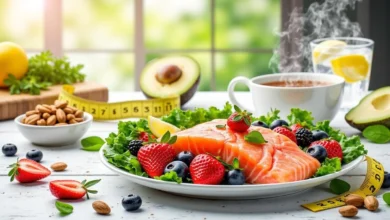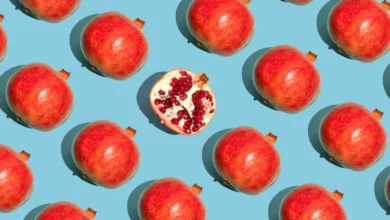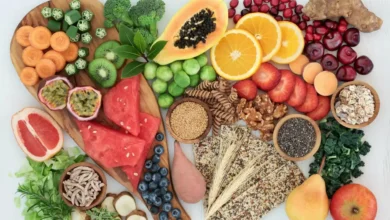The Nutrient That Could Directly Impact Your Fat Loss
dietary fiber for fat loss

Many people focus exclusively on calories when trying to lose weight, but there’s a powerful nutrient that often gets overlooked: dietary fiber. While it’s commonly associated with digestion, fiber has multiple roles that make it an ally in sustainable fat loss.
READ ALSO:
- Quick Exercise for Lower Back Pain Relief: Simple Moves That Work
- Does Running Help You Lose Weight? How to Start and Progress Without Losing Your Breath
Follow our PAGE
Why Fiber Matters for Fat Loss
Fiber is a type of carbohydrate that the body can’t fully digest. Instead of breaking down into sugar, it travels through the digestive system, helping regulate appetite, feeding gut bacteria, and slowing digestion. Because of these effects, fiber supports several weight-loss mechanisms at once.
Promotes Fullness
High-fiber foods take up more space in your stomach and absorb water, forming a gel-like substance that slows down digestion. This leads to a prolonged feeling of fullness, reducing the urge to snack between meals.
Stabilizes Blood Sugar
Fiber — especially soluble fiber — slows the absorption of glucose in the gut. By tempering blood sugar spikes, it helps prevent insulin peaks that drive fat storage and sugar cravings.
Supports a Healthy Gut Microbiome
Certain types of fiber act as prebiotics, serving as food for beneficial gut bacteria. These bacteria ferment fiber into short-chain fatty acids, which can influence metabolism, hormone signals for hunger, and fat storage.
How Much Fiber Do You Actually Need?
To make fiber work for fat loss, you need a consistent intake. Experts suggest a balance of both soluble and insoluble fiber, ideally from a variety of food sources such as fruits, vegetables, legumes, and whole grains. Gradually increasing fiber intake — while also increasing water consumption — minimizes digestive discomfort and maximizes benefits.
Practical Strategies to Boost Fiber for Weight Loss
- Choose whole, unprocessed foods — prioritize vegetables, legumes, fruits, and grains over sugary or ultra-processed options.
- Include fiber-rich breakfast options — such as oatmeal, chia puddings, or high-fiber smoothies, to start your day with sustained satiety.
- Snack smart — replace processed snacks with fiber-rich options like fruit with the skin or raw vegetables.
- Add legumes to every meal — lentils, beans, and split peas are incredibly high in fiber and support fullness and stable energy over time.
- Stay hydrated — fiber needs water to expand and work properly in your digestive system.
Potential Challenges and How to Address Them
Increasing your fiber intake too quickly can cause gas, bloating, or stomach discomfort. To avoid this, increase fiber gradually over a few weeks. Also, always pair fiber-rich foods with enough water — this helps fiber move smoothly through your digestive tract.
Final Thoughts
If you’re serious about fat loss, don’t overlook fiber. It’s not just a “digestive” nutrient — it plays a direct, scientifically backed role in regulating appetite, managing blood sugar, and improving long-term metabolic health. By making fiber a consistent part of your diet, you can create a more effective, sustainable path to fat loss.

Hello! My name is Alan Teixeira and I am passionate about helping people live healthier, more balanced lives. From mindful eating to daily habits that promote physical and mental well-being, I believe that small, consistent changes can lead to powerful transformations.
I created this blog to share practical tips, reliable information, and thoughtful insights that can inspire you to take better care of yourself—with balance, mindfulness, and positivity.
If you are looking to improve your health, nourish your body, and build a lighter, more fulfilling routine, you are in the right place. Welcome!





